Percutaneous nephrolithotomy versus retrograde intrarenal surgery for treatment of renal stones in adults
- PMID: 37955353
- PMCID: PMC10642177
- DOI: 10.1002/14651858.CD013445.pub2
Percutaneous nephrolithotomy versus retrograde intrarenal surgery for treatment of renal stones in adults
Abstract
Background: Kidney stones (also called renal stones) can be a source of pain, obstruction, and infection. Depending on size, location, composition, and other patient factors, the treatment of kidney stones can involve observation, shock wave lithotripsy, retrograde intrarenal surgery (RIRS; i.e. ureteroscopic approaches), percutaneous nephrolithotomy (PCNL), or a combination of these approaches.
Objectives: To assess the effects of percutaneous nephrolithotomy (PCNL) versus retrograde intrarenal surgery (RIRS) for the treatment of renal stones in adults.
Search methods: We performed a comprehensive search of the Cochrane Library, MEDLINE, Embase, Scopus, and two trials registries up to 23 March 2023. We applied no restrictions on publication language or status.
Selection criteria: We included randomized controlled trials that evaluated PCNL (grouped by access size in French gauge [Fr] into three groups: ≥ 24 Fr [standard PCNL], 15-23 Fr [mini-PCNL and minimally invasive PCNL], and < 15 Fr [ultra-mini-, mini-micro-, super-mini-, and micro-PCNL]) versus RIRS.
Data collection and analysis: Two review authors independently selected studies and extracted data from the included studies. Our primary outcomes were stone-free rate, major complications, and need for secondary interventions. Our main secondary outcomes were unplanned medical visits to emergency/urgent care or outpatient clinic, length of hospital stay, ureteral stricture or injury, and quality of life. We performed statistical analyses using a random-effects model. We rated the certainty of evidence using GRADE criteria. We adopted a minimally contextualized approach with predefined thresholds for minimal clinically important differences (MCIDs).
Main results: We included 42 trials assessing the effects of PCNL versus RIRS in 4571 randomized participants. Twenty-two studies were published as full-text articles, and 20 were published as abstract proceedings. The average size of stones ranged from 10.1 mm to 39.1 mm. Most studies did not report sources of funding or conflicts of interest. The main results for the most important outcomes are summarized below. Stone-free rate PCNL compared with RIRS may improve stone-free rates (risk ratio [RR] 1.13, 95% confidence interval [CI] 1.08 to 1.18; I2 = 71%; 39 studies, 4088 participants; low-certainty evidence). Based on 770 participants per 1000 being stone-free with RIRS, this corresponds to 100 more (62 more to 139 more) stone-free participants per 1000 with PCNL (an absolute difference of 10%, where the predefined MCID was 5%). Major complications PCNL compared with RIRS probably has little or no effect on major complications (RR 0.86, 95% CI 0.59 to 1.25; I2 = 15%; 34 studies, 3649 participants; moderate-certainty evidence). Based on 31 complications in the RIRS group, this corresponds to six fewer (13 fewer to six more) major complications per 1000 with PCNL (an absolute difference of 0.6%, where the predefined MCID was 2%). Need for secondary interventions PCNL compared with RIRS may reduce the need for secondary interventions (RR 0.31, 95% CI 0.17 to 0.55; I2 = 61%; 21 studies, 2005 participants; low-certainty evidence). Based on 222 secondary interventions in the RIRS group, this corresponds to 153 fewer (185 fewer to 100 fewer) secondary interventions per 1000 with PCNL (an absolute difference of 15.3%, where the predefined MCID was 5%). Unplanned medical visits No studies reported unplanned medical visits. Length of hospital stay PCNL compared with RIRS may extend length of hospital stay (mean difference 1.04 days more, 95% CI 0.27 more to 1.81 more; I2 = 100%; 26 studies, 2804 participants; low-certainty evidence). This effect size is greater than the predefined MCID of one day. Ureteral stricture or injury PCNL compared with RIRS may have little or no effect on the occurrence of ureteral strictures (RR 0.93, 95% CI 0.39 to 2.21; I2 = 0%; 13 studies, 1574 participants; low-certainty evidence). Based on 14 ureteral strictures in the RIRS group, this corresponds to one fewer (nine fewer to 17 more) ureteral strictures per 1000 with PCNL (an absolute difference of 0.1%, where the predefined MCID was 2%). Quality of life No studies reported quality of life.
Authors' conclusions: Based on a large body of evidence from 42 trials, we found that PCNL compared with RIRS may improve stone-free rates and may reduce the need for secondary interventions, but probably has little or no effect on major complications. PCNL compared with RIRS may have little or no effect on ureteral stricture rates and may increase length of hospital stay. We found no evidence on unplanned medical visits or participant quality of life. Because of the considerable shortcomings of the included trials, the evidence for most outcomes was of low certainty. Access size for PCNL was less than 24 Fr in most studies that provided this information. We expect the findings of this review to be helpful for shared decision-making about management choices for individuals with renal stones.
Trial registration: ClinicalTrials.gov NCT02430168 NCT03112499 NCT03307096.
Copyright © 2023 The Cochrane Collaboration. Published by John Wiley & Sons, Ltd.
Conflict of interest statement
LS: none. OE: is a Fellow for Cochrane Urology; however, he was not involved in the editorial process of this review. MD: none. RP: none. MB: Boston Scientific (consultant for endourology and stone management), Auris Health (consultant for robotic surgery and endourology). VP: none. PD: is the Co‐ordinating Editor of Cochrane Urology; however, he was not involved in the editorial process of this review.
Figures

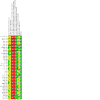
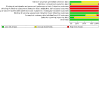
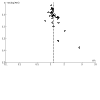
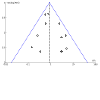
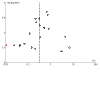
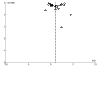
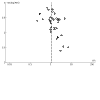
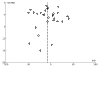
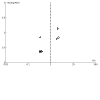

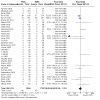
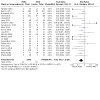






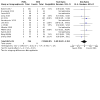

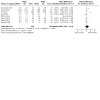


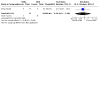


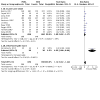

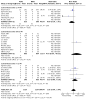

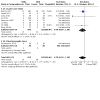
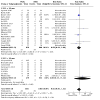
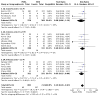
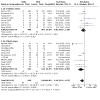
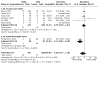
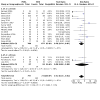

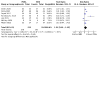
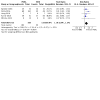
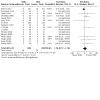
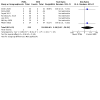
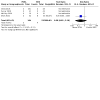
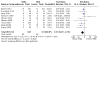
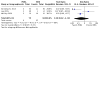
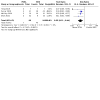
Update of
- doi: 10.1002/14651858.CD013445
References
References to studies included in this review
Abo Ghareeb 2021 {published data only}
-
- Ghareeb ME, Elsaid MH, Abdallah AA. Percutaneous nephrolithotomy (PCNL) versus retrograde intrarenal surgery (RIRS) in medium sized renal pelvic stones. QJM: An International Journal of Medicine 2021;114(Suppl 1):369. [DOI: ]
Agrawal 2016 {published data only}
-
- Agrawal MS, Mishra D. Minimally-invasive percutaneous nephrolithotomy versus retrograde intrarenal surgery for treatment of medium sized (10-20 mm) renal calculi-a prospective study. Journal of Endourology 2016;30(S2):A204‐5. [DOI: ]
Albayrak 2019 {published data only}
-
- Albayrak A, Allahverdiyev M, Yesildal C, Yavuzsan, A, Ilgi, M, Kirecci, S. The comparison of flexible ureterorenoscopy and percutaneous nephrolithotomy in 20-40mm in kidney stones. Journal of Endourology 2019;33(Suppl 1):A250. [DOI: 10.1089/end.2019.29064.abstracts] - DOI
Bailie 2018 {published data only}
-
- Bailie J, Shahbaz S, Berman I, Hong M, McCahy P. The best treatment for 10-20mm renal stones: a pilot randomised controlled trial of extracorporeal shock wave lithotripsy, ureterorenoscopy and percutaneous nephrolithotomy. Journal of Endourology 2018;32(Suppl 2):128. [DOI: ]
Berti 2021 {published data only}
-
- Berti L, Maltagliati M, Buizza C, Besana U, Calori A, Antonelli D, et al. A comparison among RIRS and MiniPerc for renal stones between 1-2 cm: a randomized controlled trial. European Urology 2021;79:389. [DOI: ]
Berti 2022 {published data only}
-
- Berti L, Maltagliati M, Besana U, Buizza C, Pacchetti A, Micali S, et al. A comparison among RIRS and miniPERC for renal stones between 1 and 2 cm using fiber dust: a RCT. European Urology 2022;81:1483. [DOI: ] - PubMed
Bozzini 2017 {published data only}
-
- Bozzini G, Verze P, Arcaniolo D, Dal Piaz O, Buffi NM, Guazzoni G, et al. A prospective randomized comparison among SWL, PCNL and RIRS for lower calyceal stones less than 2 cm: a multicenter experience: a better understanding on the treatment options for lower pole stones. World Journal of Urology 2017;35(12):1967‐75. [DOI: 10.1007/s00345-017-2084-7] - DOI - PubMed
-
- ISRCTN55546280. The role of surgical treatment on lower pole renal stones. www.isrctn.com/ISRCTN55546280 (first received 10 January 2017).
Bryniarski 2012 {published data only}
-
- Bryniarski P, Paradysz A, Zyczkowski M, Kupilas A, Nowakowski K, Bogacki R. A prospective randomized controlled study to analyze the safety and efficacy of percutaneous nephrolithotrypsy (PCNL) and retrograde intrarenal surgery (RIRS) in the treatment of renal stones over 2 cm in diameter. European Urology Supplements 2012;11(1):e381-a. - PubMed
-
- Bryniarski P, Paradysz A, Zyczkowski M, Kupilas A, Nowakowski K, Bogacki R. A randomized controlled study to analyze the safety and efficacy of percutaneous nephrolithotripsy and retrograde intrarenal surgery in the management of renal stones more than 2 cm in diameter. Journal of Endourology 2012;26(1):52-7. [DOI: 10.1089/end.2011.0235] - DOI - PubMed
Cakici 2020 {published data only}
-
- Cakici MC, Karakoyunlu N, Sari S, Ozok HU, Selmi V, Kartal, IG, et al. Comparison of retrograde intrarenal surgery and percutaneous nephrolithotomy used in the treatment of 2-4 cm kidney stones in terms of pain and need for additional analgesics: a prospective randomized study. Journal of Laparoendoscopic & Advanced Surgical Techniques 2020;30(12):1301-7. [DOI: 10.1089/lap.2020.0179] - DOI - PubMed
Datta 2016 {published data only}
-
- Datta S, Ng K-W, Solanki R, Desai J. Randomised controlled trial of ultra mini percutaneous nephrolithotomy versus retrograde intrarenal surgery in the treatment of 10-30mm calculi. European Urology Supplements 2016;15(3):e691.
Datta 2022 {published data only}
Demirbas 2016 {published data only}
Fayad 2017 {published data only}
Fayad 2021 {published data only}
Giusti 2011 {published data only}
-
- Giusti G, Bonvissuto G, Zandegiacomo S, Taverna G, Maugeri O, Benetti A, et al. Comparison between retrograde intrarenal surgery (RIRS) and percutaneous nephrolithotomy (PCNL) in the treatment of single pelvic renal stones between 2 and 4 cm. European Urology Supplements 2011;10(2):94.
Hong 2016 {published data only}
-
- Hong M, Paul E, Berman I, Shahbaz S, McCahy P. The optimal treatment for 1-2 cm renal stones: randomised trial of percutaneous nephrolithotomy versus ureterorenoscopy versus shockwave lithotripsy. BJU international 2016;117(S3):57‐8. [DOI: 10.1111/bju.13452] - DOI
Jiang 2018 {published data only}
Jin 2019 {published data only}
Kandemir 2017 {published data only}
-
- Kandemir A, Guven S, Balasar M, Sonmez MG, Taskapu H, Gurbuz R. A prospective randomized comparison of micropercutaneous nephrolithotomy (Microperc) and retrograde intrarenal surgery (RIRS) for the management of lower pole kidney stones. World Journal of Urology 2017;35(11):1771-6. [DOI: 10.1007/s00345-017-2058-9] - DOI - PubMed
Karakoyunlu 2015 {published data only}
-
- NCT02430168. Comparison of RIRS Versus PCNL Methods, According to Postoperative Pain and Analgesic Demand in 2 to 4 cm Renal Stones. clinicaltrials.gov/study/NCT02430168 (first received 30 April 2015).
Klein 2019 {published data only}
-
- Klein I, Dutta R, Colaco M, Patel M, Gutierrez-Aceves J. Procedural costs and outcomes following mini-percutaneous nephrolithotomy or flexible ureteroscopic lithotripsy for nephrolithiasis: data from a prospective, randomized clinical trial. Journal of Urology 2019;201(Suppl 4):e1093-4. [DOI: 10.1097/01.JU.0000557284.35202.8f] - DOI - PubMed
Kumar 2015 {published data only}
-
- Kumar A, Kumar N, Vasudeva P, Kumar Jha S, Kumar R, Singh H. A prospective, randomized comparison of shock wave lithotripsy, retrograde intrarenal surgery and miniperc for treatment of 1 to 2 cm radiolucent lower calyceal renal calculi: a single center experience. The Journal of Urology 2015;193(1):160-4. [DOI: ] - PubMed
Lee 2015 {published data only}
-
- NCT02067221. Comparison of Surgical Outcomes Between MPCNL and RIRS. clinicaltrials.gov/study/NCT02067221 (first received 20 February 2014).
Li 2016a {published data only}
-
- Li JW, Wang F, Cai FZ, Gao HZ. Staged retrograde flexible ureteroscopic lithotripsy versus miniaturized percutaneous nephrolithotomy for renal stones of 2-4 cm in diameter: a randomized controlled trial. Nan fang yi ke da xue xue bao [Journal of Southern Medical University] 2016;36(12):1672‐76. [PMID: ] - PubMed
Li 2016b {published data only}
Liu 2021 {published data only}
McCahy 2020 {published data only}
-
- Bailie J, Shahbaz S, Berman I, Hong M, McCahy, P. The best treatment for 10-20mm renal stones: a pilot randomised controlled trial of extracorporeal shock wave lithotripsy, ureterorenoscopy and percutaneous nephrolithotomy. Journal of Endourology 2018;32(S2):ePub. [DOI: 10.1089/end.2018.29043.abstracts] - DOI
-
- McCahy PJ, Hong M, Paul E, Berman I, Shahbaz S. Shock-wave lithotripsy, ureterorenoscopy and percutaneous nephrolithotomy for 1–2 cm renal stones: a randomised pilot study. Journal of Clinical Urology 2020;13(6):413-8. [DOI: 10.1177/2051415820935663] - DOI
Mhaske 2018 {published data only}
-
- Mhaske S, Singh M, Mulay A, Kankalia S, Satav V, Sabale V. Miniaturized percutaneous nephrolithotomy versus retrograde intrarenal surgery in the treatment of renal stones with a diameter <15 mm: a 3-year open-label prospective study. Urology Annals 2018;10(2):165‐9. [DOI: 10.4103/UA.UA_156_17] - DOI - PMC - PubMed
Mishra 2012 {published data only}
-
- Mishra S, Sabnis RS, Ganesamoni R, Doshi A, Desai MR. Prospective randomized study comparing microperc and retrograde intra renal surgery. Journal of Endourology 2012;26(Suppl 1):A451. [DOI: 10.1089/end.2012.2001] - DOI
-
- Vyas J, Doshi A, Ganpule A, Mishra S, Raghuram Sabnis R, Desai M, et al. Prospective randomized study to compare safety and efficacy of micro percutaneous nephrolithotomy (MICRO PERC) in comparison to retrograde intra renal surgery (RIRS). Urology 2012;80(3):S174.
Mrabti 2020 {published data only}
-
- Mrabti M, Jendouzi O, Khdach Y, Boukhlifi Y, Tetou M, João Peti Â, et al. Comparison between retrograde intrarenal surgery and percutaneous nephrolithotomy in the management of 20 - 30 mm renal stones. European Urology Open Science 2020;19(Suppl 2):e1868. [DOI: 10.1016/S2666-1683(20)33860-X] - DOI
Oo 2020 {published data only}
-
- Oo SM. Outcomes of minipercutaneous nephrolithotomy versus retrograde intrarenal surgery in lower pole renal stone. International Journal of Urology 2020;27(S1):40. [DOI: ]
Pattnaik 2019 {published data only}
-
- Pattnaik PK, Pattnaik SK, Pattnaik, MP. Comparison of mini PCNL v/s retrograde intrarenal surgery (RIRS) v/s extracorporeal shockwave lithotripsy (ESWL) for the treatment of renal stones up to 2.5 centimeters. Journal of Endourology 2019;33(S1):A260. [DOI: ]
Ragy 2020 {published data only}
-
- Ragy SI, Elshorbagy AA, Alzqzouq MA. Retrograde intrarenal surgery (RIRS) vs percutaneous nephrolithotomy (PCNL) in treatment of lower pole renal stone. QJM: An International Journal of Medicine 2020;113(Suppl 1):257. [DOI: 10.1093/qjmed/hcaa070.006] - DOI
Rajwardhan 2016 {published data only}
-
- Rajwardhan S, Singh SK, Pawar DS. Comparison of surgical outcomes in the treatment of renal stone of size <15 mm between mini PCNL and RIRS: a single centre, randomized, prospective study. Indian Journal of Urology 2016;32:S38-S165. [https://www.ncbi.nlm.nih.gov/pmc/articles/PMC5064671/pdf/IJU-32-38.pdf] [PMID: ]
Sabnis 2013 {published data only}
Saygin 2020 {published data only}
-
- Gökce G, Saygin H, Korğali E, Efe FM, Dundar G, Gultekin EY, et al. The evaluation of extracorporeal shockwave lithotripsy (ESWL), retrograde intrarenal surgery (RIRS) and micro percutaneous nephrolithotomy (mPCNL) treatments in kidney stones smaller than two centimeters. Journal of Endourology 2014;28:A267‐8. [DOI: 10.1089/end.2014.3500] - DOI
-
- Saygin H, Gökce G, Korğali E. The evaluations of ESWL, RIRS and m-PCNL treatments in kidney stones smaller than two centimeters. Medical Science and Discovery 2020;7(4):450-4. [DOI: 10.36472/msd.v7i4.366] - DOI
Shah 2010 {published data only}
-
- Shah H, Jain M, Verma R, Bansal M. A prospective randomized trial comparing safety and efficacy of retrograde intrarenal surgery (RIRS) vs. tubeless percutaneous nephrolithotomy (PCNL) in management of medium sized renal calculi (11-20 mm dimension). Journal of Urology 2010;183(4):e493-4. [DOI: 10.1016/j.juro.2010.02.845] - DOI
Soomro 2018 {published data only}
-
- Soomro A, Saulat S, Qadri S. Endourological management of renal calculi of 1 to 2cm size, tubeless mini-percutaneous nephrolithotomy versus retrograde intrarenal surgery, who is the winner? Journal of Endourology 2018;32(Suppl 2):A263-4. [DOI: 10.1089/end.2018.29043.abstracts] - DOI
Terribile 2019 {published data only}
-
- Terribile M, Arcaniolo D, Bottone F, Stizzo M, Amicuzi U, Oliva F, et al. Efficacy and safety of SWL, RIRS and PCNL in lower caliceal stones. European Urololgy Supplement 2019;18(7):32971. [DOI: 10.1016/S1569-9056(19)33129-X] - DOI
Yavuz 2018 {published data only}
-
- Yavuz A, Bayar G, Kilinc M, Yazar VM, Cakmak S. Now is the time for individual surgical treatment of lower pole stone: ethical dilemma or scientific truth. Journal of Endourology 2018;32(S2):A121. [DOI: 10.1089/end.2018.29043.abstracts] - DOI
Zeng 2018b {published data only}
-
- NCT02519634. Super-mini percutaneous nephrolithotomy (SMP) versus retrograde intrarenal surgery (RIRS) for symptomatic lower pole renal calculi of 10-20 mm size: a randomized controlled trial. clinicaltrials.gov/study/NCT02519634 (first received 11 August 2015).
-
- Zeng G, Zhang T, Agrawal M, He X, Zhang W, Xiao K, et al. Super-mini percutaneous nephrolithotomy (SMP) vs retrograde intrarenal surgery for the treatment of 1-2 cm lower-pole renal calculi: an international multicentre randomised controlled trial. BJU international 2018;122(6):1034-40. [DOI: 10.1111/bju.14427] - DOI - PubMed
-
- Zeng G, Zhang T, Fan J, Zhang W, Yang S, Xiao K, et al. Super-mini percutaneous nephrolithotomy (SMP) versus retrograde intrarenal surgery for the treatment of 1 to 2 cm lower pole renal calculi: a multinational multicenter randomized controlled trial. Journal of Endourology 2017;31:A39.
-
- Zeng G, Zhang T, Fan J, Zhang W, Yang S, Xiao K, et al. Super-mini percutaneous nephrolithotomy (SMP) versus retrograde intrarenal surgery for the treatment of 1-2 cm lower pole renal calculi: a multicenter randomized controlled trial. Journal of Urology 2018;199(4):e720. - PubMed
Zhang 2018 {published data only}
-
- Zhang H, Hong T Y, Li G, Jiang N, Hu C, Cui X, et al. Comparison of the efficacy of ultra-mini PCNL, flexible ureteroscopy, and shock wave lithotripsy on the treatment of 1-2 cm lower pole renal calculi. Urologia Internationalis 2019;102:153-9. - PubMed
References to studies excluded from this review
Assimos 2019 {published data only}
-
- Assimos D. Re: super-mini percutaneous nephrolithotomy (SMP) vs retrograde intrarenal surgery for the treatment of 1-2 cm lower-pole renal calculi: an international multicentre randomised controlled trial. The Journal of Urology 2019;201(1):24. [DOI: 10.1097/01.ju.0000550146.54734.ff] [PMID: ] - DOI - PubMed
Basiri 2009 {published data only}
-
- Basiri A, Simforoosh N, Ziaee A, Shayaninasab H, Moghaddam SM, Zare S. Retrograde, antegrade, and laparoscopic approaches for the management of large, proximal ureteral stones: a randomized clinical trial. Journal of Endourology 2008;22(12):2677-80. [DOI: 10.1089/end.2008.0095] [PMID: ] - DOI - PubMed
-
- Monga M. Retrograde, antegrade, and laparoscopic approaches for the management of large, proximal ureteral stones: a randomized clinical trial (editorial comments). International Brazilian Journal of Urology 2009;35(1):97. [DOI: 10.1590/S1677-55382009000100017] - DOI
Black 2019 {published data only}30985345
Chung 2008 {published data only}
Coskun 2021 {published data only}
-
- Coskun A, Eryildirim B, Sarica K, Çamur E, Can U, Saglam E. Comparison of mini percutaneous nephrolithotomy (mini PCNL) and retrograde intrarenal surgery (RIRS) for the minimal invasive management of lower caliceal stones. Urology Journal 2021;23(18):485-90. [DOI: ] - PubMed
DRKS00007478 {unpublished data only}
-
- DRKS00007478. Ultra-mini PCNL versus flexible ureterorenoscopy: evaluation of outcome, perioperative complications and analgetic consumption for the treatment of patients with kidney stones. drks.de/search/en/trial/DRKS00007478 (first received 12 November 2014).
Jain 2021 {published data only}
Liu 2013 {published data only}
NCT03112499 {published data only}
-
- NCT03112499. The effect of three endourological procedures for the management of renal calculi regarding acute kidney injury. clinicaltrials.gov/study/NCT03112499 (first received 13 April 2017).
NCT03307096 {published data only}
-
- NCT03307096. Evaluation of two different treatments for lower pore renal stone: microperc vs FURS. clinicaltrials.gov/study/NCT03307096 (first received 11 October 2017).
NCT03932370 {unpublished data only}
-
- NCT03932370. Flexible ureteroscopy versus mini-percutaneous nephrolithotomy for treatment of renal stones. clinicaltrials.gov/study/NCT03932370 (first received 30 April 2019).
Padron 2016 {unpublished data only}
-
- Padrón L. Comparison between retrograde intrarenal surgery and percutaneous nephrolithotomy in the prone position in the management of kidney stones smaller than 15 mm in diameter. Incomplete reference; unable to obtain 2016;(1):9-15.
Selmi 2017 {published data only}
-
- Selmi V, Nalbant I, Ozturk U, Tuygun C, Goktug HNG, Imamoglu MA. Comparison of retrograde intrarenal surgery and percutaneous nephrolithotomy methods in treatment of upper calyceal stones of 10-20 mm. Journal of Laparoendoscopic & Advanced Surgical Techniques 2017;27(12):1293-8. [DOI: 10.1089/lap.2016.0634] - DOI - PubMed
Sharma 2014 {published data only}
-
- Sharma K, Singh B, Sankhwar S, Goel A, Dalela D, Sharma P, et al. Retrograde intrarenal surgery versus tubeless percutaneous nephrolithotomy in the management of lower-pole renal stones with a diameter of 10 to 20mm. Indian Journal of Urology 2014;30(Suppl 1):S90-1.
Ucer 2018 {published data only}
-
- Ucer O, Erbatu O, Albaz A C, Gumus B, Muezzinoglu T. Comparison of stone free rates and quality of life between percutaneous nephrolithotomy (PNL) and retrograde intra-renal surgery (RIRS) in management of 2-4 cm renal stones: a prospective controlled study. European Urology Supplements 2018;17(2):e1402. [DOI: 10.1016/S1569-9056(18)31823-2] - DOI - PMC - PubMed
Wymer 2020 {published data only}
-
- Wymer K, Juvet T, Sharma V, Potretzke A, Agarwal D, Rivera M, et al. Comparative cost-effectiveness of percutaneous nephrolithotomy, ureteroscopy, and extracorporeal shock wave lithotripsy for the management of 1-2 cm renal stones. Journal of Urology 2020;203(Suppl 4):e411. [DOI: 10.1097/JU.0000000000000866.05] - DOI - PubMed
References to ongoing studies
ACTRN12618000787280 {unpublished data only}
-
- ACTRN12618000787280. A randomised controlled trial comparing mini-PCNL with flexible ureteropyeloscopy for urinary tract calculi. anzctr.org.au/Trial/Registration/TrialReview.aspx?ACTRN=12618000787280 (first received 5 September 2018).
ChiCTR1800016983 {unpublished data only}
-
- ChiCTR1800016983. Comparison of miniaturized percutaneous nephrolithotomy and retrograde intrarenal surgery for the management of 2-3 cm lower pole kidney stones in obese patients: a randomized control trial. chictr.org.cn/showprojEN.html?proj=28869 (first received 5 July 2018) .
ChiCTR1800019553 {unpublished data only}ChiCTR1800019553
-
- ChiCTR1800019553. A multicenter, randomized, controlled trial for the analysis of minimally invasive surgical strategies for different types of kidney stones. chictr.org.cn/showprojEN.html?proj=32642 (first received 5 November 2020).
ChiCTR2000033476 {published data only}
-
- ChiCTR2000033476. Comparative analysis of retrograde intrarenal surgery and ultra-mini percutaneous nephrolithotomy in management of 1-2 cm kidney stones: a randomized controlled trial. chictr.org.cn/showprojEN.html?proj=52775 (first received 2 June 2020).
ChiCTR2000038817 {published data only}
-
- ChiCTR2000038817. Comparing the clinical efficacy, safety and medical expenses of ultra-mini percutaneous nephrolithotomy and flexible ureteroscopy lithotripsy in management of 1-2 cm kidney stone: a prospective randomized controlled trial. chictr.org.cn/showprojEN.html?proj=61967 (first received 4 October 2020).
ChiCTR‐INR‐17013019 {unpublished data only}ChiCTR‐INR‐17013019
-
- ChiCTR-INR-17013019. Comparison of the effect between SMP and RIRS for treating diameter ≤2cm renal stone: a prospective randomized controlled trial. chictr.org.cn/showprojEN.html?proj=21911 (first received 18 October 2017).
CTRI/2021/08/035645 {published data only}
-
- CTRI/2021/08/035645. Comparison of of PCNL(percutaneous nephrolithotomy) and RIRS(retrograde intrarenal surgery) for renal stone less than 20 mm. ctri.nic.in/Clinicaltrials/pmaindet2.php?trialid=57345 (first received 13 August 2021.
IRCT20190624043991N5 {unpublished data only}
-
- IRCT20190624043991N5. Comparing mini perc outcome and RIRS in treating remaining post-PCNL stones > 2 cm or Hounsfield > 1000 or SSD (skin stone distance) > 10 cm. www.irct.ir/trial/44495 (first received 3 March 2020).
IRCT20190624043991N9 {unpublished data only}
-
- IRCT20190624043991N9. Comparison of PCNL and RIRS surgery results for the treatment of two to four centimeters kidney stones in patients referred to hospital. www.irct.ir/trial/50878 (first received 13 September 2020).
McClinton 2020 {published and unpublished data}
-
- ISRCTN98970319. PUrE: percutaneous nephrolithotomy, flexible ureterorenoscopy and extracorporeal shockwave lithotripsy for lower pole kidney stones. isrctn.com/ISRCTN98970319 (first received 11 November 2015).
-
- McClinton S, Starr K, Thomas R, MacLennan G, Lam T, Hernandez R, et al. The clinical and cost effectiveness of surgical interventions for stones in the lower pole of the kidney: the percutaneous nephrolithotomy, flexible ureterorenoscopy and extracorporeal shockwave lithotripsy for lower pole kidney stones randomised controlled trial (PUrE RCT) protocol. Trials 2020;21(1):479. [DOI: 10.1186/s13063-020-04326-x] - DOI - PMC - PubMed
NCT04856722 {unpublished data only}
-
- NCT04856722. Mini-PNL, RIRS, and ESWL for treatment of medium-sized, high-density, non-lower pole, renal stones. clinicaltrials.gov/study/NCT04856722 (first received 23 April 2021).
Additional references
Armitage 2012
-
- Armitage JN, Irving SO, Burgess NA. Percutaneous nephrolithotomy in the United Kingdom: results of a prospective data registry. European Urology 2012;61(6):1188-93. [PMID: ] - PubMed
Assimos 2016a
-
- Assimos D, Krambeck A, Miller NL, Monga M, Murad MH, Nelson CP, et al. Surgical management of stones: American Urological Association/Endourological Society Guidelines, PART I. Journal of Urology 2016;196(4):1153-60. [PMID: ] - PubMed
Assimos 2016b
-
- Assimos D, Krambeck A, Miller NL, Monga M, Murad MH, Nelson CP, et al. Surgical management of stones: American Urological Association/Endourological Society Guideline, PART II. Journal of Urology 2016;196(4):1161-9. [PMID: ] - PubMed
Barreto 2019
Campschroer 2018
Canvasser 2017
-
- Canvasser NE, Alken P, Lipkin M, Nakada SY, Sodha HS, Tepeler A, et al. The economics of stone disease. World Journal of Urology 2017;35(9):1321-9. [PMID: ] - PubMed
Chung 2019
-
- Chung DY, Kang DH, Cho KS, Jeong WS, Jung HD, Kwon JK, et al. Comparison of stone-free rates following shock wave lithotripsy, percutaneous nephrolithotomy, and retrograde intrarenal surgery for treatment of renal stones: a systematic review and network meta-analysis. PLoS One 2019;14(2):e0211316. [DOI: 10.1371/journal.pone.0211316] - DOI - PMC - PubMed
Cleveland 2023
Danuser 2007
-
- Danuser H, Muller R, Descoeudres B, Dobry E, Studer UE. Extracorporeal shock wave lithotripsy of lower calyx calculi: how much is treatment outcome influenced by the anatomy of the collecting system? European Urology 2007;52(2):539-46. [PMID: ] - PubMed
Davis 2018
-
- Davis NF, Quinlan MR, Poyet C, Lawrentschuk N, Bolton DM, Webb D, et al. Miniaturised percutaneous nephrolithotomy versus flexible ureteropyeloscopy: a systematic review and meta-analysis comparing clinical efficacy and safety profile. World Journal of Urology 2018;36(7):1127-38. [DOI: 10.1007/s00345-018-2230-x] [PMID: ] - DOI - PubMed
De 2015
-
- De S, Autorino R, Kim F, Zargar H, Laydner H, Balsamo R, et al. Percutaneous nephrolithotomy versus retrograde intrarenal surgery: a systematic review and meta-analysis. European Urology 2015;67(1):125-37. [PMID: ] - PubMed
de la Rosette 2014
-
- la Rosette J, Denstedt J, Geavlete P, Keeley F, Matsuda T, Pearle M, et al, CROES URS Study Group. The clinical research office of the endourological society ureteroscopy global study: indications, complications, and outcomes in 11,885 patients. Journal of Endourology 2014;28(2):131-9. [PMID: ] - PubMed
De, 2016
-
- De S, Autorino R, Kim F J, Zargar H, Laydner H, Balsamo R, et al. Corrigendum re: "Percutaneous Nephrolithotomy Versus Retrograde Intrarenal Surgery: A Systematic Review and Meta-analysis" [Eur Urol 2015;67:125-37]. European Urology 2016;69(4):e85. - PubMed
Deeks 2011
-
- Deeks JJ, Higgins JP, Altman DG. Chapter 9: Analysing data and undertaking meta-analyses. In: Higgins JP, Green S, editor(s). Cochrane Handbook for Systematic Reviews of Interventions. Version 5.1.0 (updated March 2011). The Cochrane Collaboration, 2011. Available from training.cochrane.org/handbook/archive/v5.1.
Desai 2012
-
- Desai M, Mishra S. 'Microperc' micro percutaneous nephrolithotomy: evidence to practice. Current Opinion in Urology 2012;22(2):134-8. [PMID: ] - PubMed
Desai 2013
Diamond 1999
-
- Diamond R, Becker M. The Wisconsin Quality of Life Index: a multidimensional model for measuring quality of life. The Journal of Clinical Psychiatry 1999;60(Supp 3):29-31. [PMID: ] - PubMed
Dindo 2004
-
- Dindo D, Demartines N, Clavien PA. Classification of surgical complications: a new proposal with evaluation in a cohort of 6336 patients and results of a survey. Annals of Surgery 2004;240(2):205-13. [DOI: 10.1097/01.sla.0000133083.54934.ae] - DOI - PMC - PubMed
Donaldson 2015
-
- Donaldson J, Lardas M, Scrimgeour D, Stewart F, MacLennan S, Lam T, et al. Systematic review and meta-analysis of the clinical effectiveness of shock wave lithotripsy, retrograde intrarenal surgery, and percutaneous nephrolithotomy for lower-pole renal stones. European Urology 2015;67(4):612-6. [PMID: ] - PubMed
EndNote 2022 [Computer program]
-
- EndNote Version 20. Clarivate, 2022. Available from www.endnote.com.
Fernström 1976
-
- Fernström I, Johansson B. Percutaneous pyelolithotomy: a new extraction technique. Scandinavian Journal of Urology and Nephrology 1976;10(1):257-9. [PMID: ] - PubMed
Gao 2017
-
- Gao XS, Liao BH, Chen YT, Feng SJ, Gao R, Luo DY, et al. Different tract sizes of miniaturized percutaneous nephrolithotomy versus retrograde intrarenal surgery: a systematic review and meta-analysis. Journal of Endourology 2017;31(11):1101-10. [PMID: ] - PubMed
Geavlete 2006
-
- Geavlete P, Georgescu D, Nita G, Mirciulescu V, Cauni V. Complications of 2735 retrograde semirigid ureteroscopy procedures: a single-center experience. Journal of Endourology 2006;20(3):179-85. [PMID: ] - PubMed
Ghani 2016
-
- Ghani K, Andonian S, Bultitude M, Desai M, Giusti G, Okhunov Z, et al. Percutaneous nephrolithotomy: update, trends, and future directions. European Urology 2016;70(2):382-96. [PMID: ] - PubMed
GRADEpro GDT 2022 [Computer program]
-
- GRADEpro GDT: GRADEpro Guideline Development Tool. McMaster University and Evidence Prime, 2022. Available at gradepro.org.
Guyatt 2008
-
- Guyatt GH, Oxman AD, Vist GE, Kunz R, Falck-Ytter Y, Schünemann HJ, et al. GRADE: what is "quality of evidence" and why is it important to clinicians? BMJ (Clinical Research Ed.) 2008;336(7651):995-8. [DOI: 10.1136/bmj.39490.551019.BE] - DOI - PMC - PubMed
Guyatt 2011
Higgins 2002
Higgins 2003
Higgins 2011
-
- Higgins JP, Deeks JJ, Altman DG. Chapter 16: Special topics in statistics. In: Higgins JP, Green S, editor(s). Cochrane Handbook for Systematic Reviews of Interventions Version 5.1.0 (updated March 2011). The Cochrane Collaboration, 2011. Available from training.cochrane.org/handbook/archive/v5.1.
Higgins 2017
-
- Higgins JP, Altman DG, Sterne JA, editor(s). Chapter 8: Assessing risk of bias in included studies. In: Higgins JP, Churchill R, Chandler J, Cumpston MS, editor(s). Cochrane Handbook for Systematic Reviews of Interventions Version 5.2.0 (updated June 2017). Cochrane, 2017. Available from training.cochrane.org/handbook/archive/v5.2.
Higgins 2023
-
- Higgins JP, Thomas J, Chandler J, Cumpston M, Li T, Page MJ, Welch VA, editor(s). Cochrane Handbook for Systematic Reviews of Interventions Version 6.4 (updated August 2023). Cochrane, 2023. Available from www.training.cochrane.org/handbook. - PMC - PubMed
Jackman 1998
-
- Jackman S, Hedican S, Peters C, Docimo S. Percutaneous nephrolithotomy in infants and preschool age children: experience with a new technique. Urology 1998;52:697-701. [PMID: ] - PubMed
Jiang 2017
Joshi 2003
-
- Joshi HB, Stainthorpe A, MacDonagh RP, Keeley FX Jr, Timoney AG. Indwelling ureteral stents: evaluation of symptoms, quality of life, and utility. Journal of Urology 2003;169(3):1065-9. [PMID: ] - PubMed
Kallidonis 2015
-
- Kallidonis P, Liatsikos E. Re: percutaneous nephrolithotomy versus retrograde intrarenal surgery: a systematic review and meta-analysis. European Urology 2015;68(4):740-1. - PubMed
Kallidonis 2020
-
- Kallidonis P, Ntasiotis P, Somani B, Adamou C, Emiliani E, Knoll T, et al. Systematic review and meta-analysis comparing percutaneous nephrolithotomy, retrograde intrarenal surgery and shock wave lithotripsy for lower pole renal stones <2cm in maximum diameter. The Journal of Urology 2020;204(3):427-33. [DOI: 10.1097/JU.0000000000001013] - DOI - PubMed
Kim 2003
-
- Kim SC, Kuo RL, Lingeman JE. Percutaneous nephrolithotomy: an update. Current Opinion in Urology 2003;13(3):235-41. [PMID: ] - PubMed
Ko 2008
-
- Ko R, Soucy F, Denstedt JD, Razvi H. Percutaneous nephrolithotomy made easier: a practical guide, tips and tricks. BJU International 2008;101(5):535-9. [PMID: ] - PubMed
Kondas 1994
-
- Kondas J, Szentgyorgyi E, Vaczi L, Kiss A. Splenic injury: a rate complication of percutaneous nephrolithotomy. International Urology and Nephrology 1994;26(4):399-404. [PMID: ] - PubMed
Li 2009
-
- Li X, He Z, Wu K, Li SK, Zeng G, Yuan J, et al. Chinese minimally invasive percutaneous nephrolithotomy: the Guangzhou experience. Journal of Endourology 2009;23(10):1693-7. [PMID: ] - PubMed
Li 2018
Liberati 2009
-
- Liberati A, Altman DG, Tetzlaff J, Mulrow C, Gøtzsche PC, Ioannidis JP, et al. The PRISMA statement for reporting systematic reviews and meta-analyses of studies that evaluate health care interventions: explanation and elaboration. PLOS Medicine 2009;6(7):e1000100. [DOI: 10.1371/journal.pmed.1000100] - DOI - PMC - PubMed
Luo 2018
Marcovich 2005
-
- Marcovich R, Smith A. Percutaneous renal access: tips and tricks. BJU International 2005;95(s2):78-84. [PMID: ] - PubMed
Mariappan 2006
-
- Mariappan P, Smith G, Moussa SA, Tolley DA. One week of ciprofloxacin before percutaneous nephrolithotomy significantly reduces upper tract infection and urosepsis: a prospective controlled study. BJU International 2006;98(5):1075-9. [PMID: ] - PubMed
Marshall 1964
-
- Marshall VF. Fiber optics in urology. Journal of Urology 1964;91:110-4. [PMID: ] - PubMed
Meltzer 2018
Miller 1999
-
- Miller OF, Kane CJ. Time to stone passage for observed ureteral calculi: a guide for patient education. Journal of Urology 1999;162(3, pt 1):688-91. [PMID: ] - PubMed
Mishra 2011
-
- Mishra S, Sharma R, Garg C, Kurien A, Sabnis R, Desai M. Prospective comparative study of miniperc and standard PCNL for treatment of 1 to 2 cm size renal stones. BJU International 2011;108(6):899-900. [PMID: ] - PubMed
Nagele 2007
-
- Nagele U, Horstmann M, Sievert K-D, Kuczyk MA, Walcher U. A newly designed amplatz sheath decreases intrapelvic irrigation pressure during percutaneous nephrolitholapaxy: an in-vitro pressure-measurement and microscopic study. Journal of Endourology 2007;21(9):1113-6. [PMID: ] - PubMed
Ordonez 2019
-
- Ordonez M, Hwang EC, Borofsky M, Bakker CJ, Gandhi S, Dahm P. Ureteral stent versus no ureteral stent for ureteroscopy in the management of renal and ureteral calculi. Cochrane Database of Systematic Reviews 2019, Issue 2. Art. No: CD012703. [DOI: 10.1002/14651858.CD012703.pub2] - DOI - PMC - PubMed
Park 2006
-
- Park S, Pearle MS. Imaging for percutaneous renal access and management of renal calculi. Urologic Clinics of North America 2006;33(3):353-64. [PMID: ] - PubMed
Pearle 2005
-
- Pearle MS, Lingeman JE, Leveillee R, Kuo R, Preminger GM, Nadler RB, et al. Prospective randomized trial comparing shockwave lithotripsy and ureteroscopy for lower pole caliceal calculi 1 cm or less. Journal of Urology 2005;173(6):2005-9. [PMID: ] - PubMed
Pickard 2015
-
- Pickard R, Starr K, MacLennan G, Lam T, Thomas R, Burr J, et al. Medical expulsive therapy in adults with ureteric colic: a multicentre, randomised, placebo-controlled trial. Lancet 2015;385(9991):341-9. [PMID: ] - PubMed
Review Manager 5 [Computer program]
-
- Review Manager (RevMan). Version 5.3. Copenhagen: The Nordic Cochrane Centre, The Cochrane Collaboration, 2014.
RevMan Calculator
-
- RevMan Calculator. Available from www.training.cochrane.org/resource/revman-calculator.
RevMan Web 2020 [Computer program]
-
- Review Manager Web (RevMan Web). Version 5.8.0. The Cochrane Collaboration, 2020. Available at revman.cochrane.org.
Romero 2010
Roth 1988
-
- Roth RA, Beckmann CF. Complications of extracorporeal shockwave lithotripsy and percutaneous nephrolithotomy. Urologic Clinics of North America 1988;15(2):155-66. [PMID: ] - PubMed
Rukin 2017
-
- Rukin NJ, Siddiqui ZA, Chedgy EC, Somani BK. Trends in upper tract stone disease in England: evidence from the Hospital Episodes Statistics Database. Urologia Internationalis 2017;98(4):391-6. [PMID: ] - PubMed
Rule 2011
Sabnis 2013
Sahinkanat 2008
-
- Sahinkanat T, Ekerbicer H, Onal B, Tansu N, Resim S, Citgez S, et al. Evaluation of the effects of relationships between main spatial lower pole calyceal anatomic factors on the success of shockwave lithotripsy in patients with lower pole kidney stones. Urology 2008;71(5):801-5. [PMID: ] - PubMed
Saigal 2005
-
- Saigal CS, Joyce G, Timilsina AR. Direct and indirect costs of nephrolithiasis in an employed population: opportunity for disease management? Kidney International 2005;68(4):1808-14. [PMID: ] - PubMed
Sanguedolce 2017
-
- Sanguedolce F, Bozzini G, Chew B, Kallidonis P, de la Rosette. The evolving role of retrograde intrarenal surgery in the treatment of urolithiasis. European Urological Focus 2017;3(1):46-55. [PMID: ] - PubMed
Scales 2012
Schünemann 2023
-
- Schünemann HJ, Higgins JP, Vist GE, Glasziou P, Akl EA, Skoetz N, et al. Chapter 14: Completing 'Summary of findings' tables and grading the certainty of the evidence. In: Higgins JP, Thomas J, Chandler J, Cumpston M, Li T, Page MJ, Welch VA, editor(s). Cochrane Handbook for Systematic Reviews of Interventions Version 6.4 (updated August 2023). Cochrane, 2023. Available from training.cochrane.org/handbook.
Setthawong 2023
-
- Setthawong V, Srisubat A, Potisat S, Lojanapiwat B, Pattanittum P. Extracorporeal shock wave lithotripsy (ESWL) versus percutaneous nephrolithotomy (PCNL) or retrograde intrarenal surgery (RIRS) for kidney stones. Cochrane Database of Systematic Reviews 2023, Issue 8. Art. No: CD007044. [DOI: 10.1002/14651858.CD007044.pub4] - DOI - PMC - PubMed
Sharma 2021
Somani 2017
Sorokin 2017
-
- Sorokin I, Mamoulakis C, Miyazawa K, Rodgers A, Talati J, Lotan Y. Epidemiology of stone disease across the world. World Journal of Urology 2017;35(9):1301-20. [PMID: ] - PubMed
Thompson 2020
-
- Thompson E, Lai A, Morrey L, Borofsky M S, Dahm P. A longitudinal assessment of the reporting quality of randomized controlled trials for surgical interventions to treat nephrolithiasis over 16 years (2002 to 2017). Journal of Endourology 2020;34(4):502-8. [DOI: 10.1089/end.2019.0649] - DOI - PubMed
Tsai 2020
-
- Tsai SH, Chung HJ, Tseng PT, Wu YC, Tu YK, Hsu CW, et al. Comparison of the efficacy and safety of shockwave lithotripsy, retrograde intrarenal surgery, percutaneous nephrolithotomy, and minimally invasive percutaneous nephrolithotomy for lower-pole renal stones: a systematic review and network meta-analysis. Medicine (Baltimore) 2020;99(10):e19403. [DOI: 10.1097/MD.0000000000019403] - DOI - PMC - PubMed
Turk 2016
-
- Turk C, Petrik A, Sarica K, Seitz C, Skolarikos A, Straub M, et al. EAU guidelines on diagnosis and conservative management of urolithiasis. European Urology 2016;69(3):468-74. [PMID: ] - PubMed
Valdivia 2011
-
- Valdivia J, Scarpa R, Duvdevani M, Gross A, Nadler R, Nutahara K, et al. Supine versus prone position during percutaneous nephrolithotomy: a report from the clinical research office of the endourological society percutaneous nephrolithotomy global study. Journal of Endourology 2011;25:1619-25. [PMID: ] - PubMed
Van Cleynenbreugel 2017
Vaughan 1971
-
- Vaughan ED, Gillenwater JY. Recovery following complete chronic unilateral ureteral occlusion: functional, radiographic, and pathologic alterations. Journal of Urology 1971;106(1):27-35. [PMID: ] - PubMed
Veser 2018
Wan 2014
Wilhelm 2023
Wolf 1998
-
- Wolf JS Jr. Management of intraoperatively diagnosed colonic injury during percutaneous nephrostolithotomy. Techniques in Urology 1998;4(3):160-4. [PMID: ] - PubMed
Wright 2014
Wright 2016
Zeng 2015
Zeng 2016
-
- Zeng G, Zhu W, Liu Y, Zhao Z, Cai C. Super-mini percutaneous nephrolithotomy (SMP): a new concept in technique and instrumentation. BJU International 2016;117(4):655-61. [PMID: ] - PubMed
Zeng 2018a
Zewu 2019
-
- Zewu Z, Cui Y, Feng Z, Yang L, Chen H. Comparison of retrograde flexible ureteroscopy and percutaneous nephrolithotomy in treating intermediate size renal stones (2-3cm): a meta-analysis and systematic review. International Brazilian Journal of Urology 2019;45(1):10-22. [DOI: 10.1590/S1677-5538.IBJU.2018.0510] - DOI - PMC - PubMed
References to other published versions of this review
Soderberg 2019
Publication types
MeSH terms
Associated data
LinkOut - more resources
Full Text Sources
Medical

